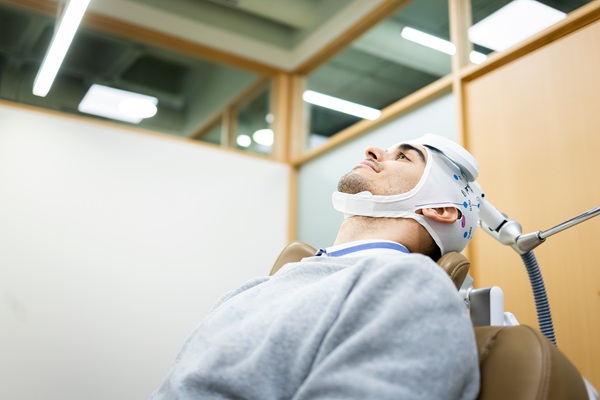TMS Treatment Process FAQs

The TMS treatment process is an alternative option for people with treatment-resistant depression, those who react adversely to antidepressants, and patients looking for a drug-free approach to treating depression.
Transcranial magnetic stimulation (TMS) includes sending magnetic waves into a patient's brain to help with the symptoms of depression. It is an effective alternative that the Food and Drug Administration approves as a treatment for depression. It is also approved for treating obsessive-compulsive disorder.
Frequently asked questions about the TMS treatment process
Thinking about giving transcranial magnetic stimulation a try? Let us go over the answers to some of the questions you might have:
1. What makes TMS therapy so effective?
TMS therapy helps to improve a patient's brain chemistry by targeting areas of the prefrontal cortex that regulate emotions and mood. People with depression typically have reduced activity in these areas. The magnetic waves sent into a patient's brain during TMS treatment sessions are converted into electric charges in the brain, stimulating an increase in brain activity. This usually leads to a significant reduction in the symptoms of depression.
2. Is the TMS treatment process painful?
TMS therapy is a non-invasive treatment that does not cause any pain, negating the need for sedatives or anesthetics. All patients feel during the treatment is a light tapping sensation on their forehead caused by magnetic waves entering their skulls.
The magnetic coil used for transcranial magnetic stimulation makes a loud clicking noise, so earplugs are provided to patients to protect their ears. Patients are usually free to drive themselves home and return to their regular activities right after each treatment session.
3. Who needs TMS therapy?
TMS therapy is for patients who have taken antidepressants for over six weeks without experiencing any noticeable improvements. This is known as treatment-resistant depression. TMS therapy often provides relief for such patients where antidepressants have failed. Transcranial magnetic stimulation is also for people who would rather not deal with the side effects of antidepressants and those looking for a medication-free approach to treating depression.
4. What are the side effects of TMS therapy?
TMS therapy typically does not lead to significant side effects. However, some patients report a tingling sensation on their heads or headaches after TMS treatment sessions. These side effects often go away as the patient gets more treatments. In less than 0.01% of cases, TMS therapy patients get seizures as a side effect. People who have a history of seizures are typically not eligible for the treatment.
5. Are TMS treatments safe?
Yes. TMS treatments are a safe way to treat depression, and the FDA approves the procedure. People who get TMS therapy can usually get back to their regular routine right after. There is no evidence that indicates TMS therapy can lead to cognitive impairment.
However, TMS therapy is not recommended for people with metal plates or screws in their heads. People who wear metal braces or have metal fillings can still get the treatment.
Restore your quality of life
Our psychiatrist can help you to get past the symptoms of depression and improve your quality of life. Call or stop by our New York clinic to set up an appointment.
Request an appointment here: https://www.hopetmsofny.com or call Hope TMS and Neuropsychiatric Center at (646) 578-8152 for an appointment in our New York office.
Check out what others are saying about our services on Yelp: TMS Treatment Process in New York, NY.
Recent Posts
Transcranial magnetic stimulation, also known as TMS treatment, is an innovative and noninvasive therapy for several mental health conditions. By using magnetic fields to stimulate specific areas of the brain, TMS is an effective treatment for cases where traditional methods have provided little to no relief. It is important to know which mental disorders are…
A TMS doctor focuses on safety, evidence, and practical results when discussing transcranial magnetic stimulation for depression and related conditions. This noninvasive therapy uses targeted magnetic pulses to activate specific brain networks. Strong safety protocols, careful screening, and consistent monitoring provide patients with a clear path to relief while allowing them to maintain their everyday…
A psychiatric evaluation is an assessment of how a person remembers, thinks, reasons, and feels. Series of physical tests and questions are used during the process. Psychiatrists and other mental health professionals can use this type of evaluation to diagnose various mental disorders.Putting patients through psychiatric evaluations enables psychiatrists to diagnose a range of health…
A psychiatrist is a mental health professional who diagnoses and treats mental disorders through psychotherapy, medication, or a combination of both. However, speaking with this mental health professional for the first time can raise many questions and concerns. Understanding what to ask during the initial consultation can help you set expectations, build trust in your…


